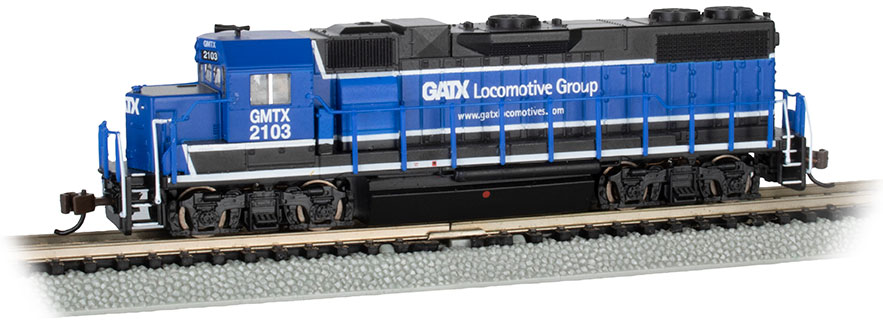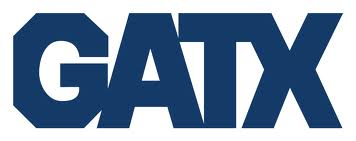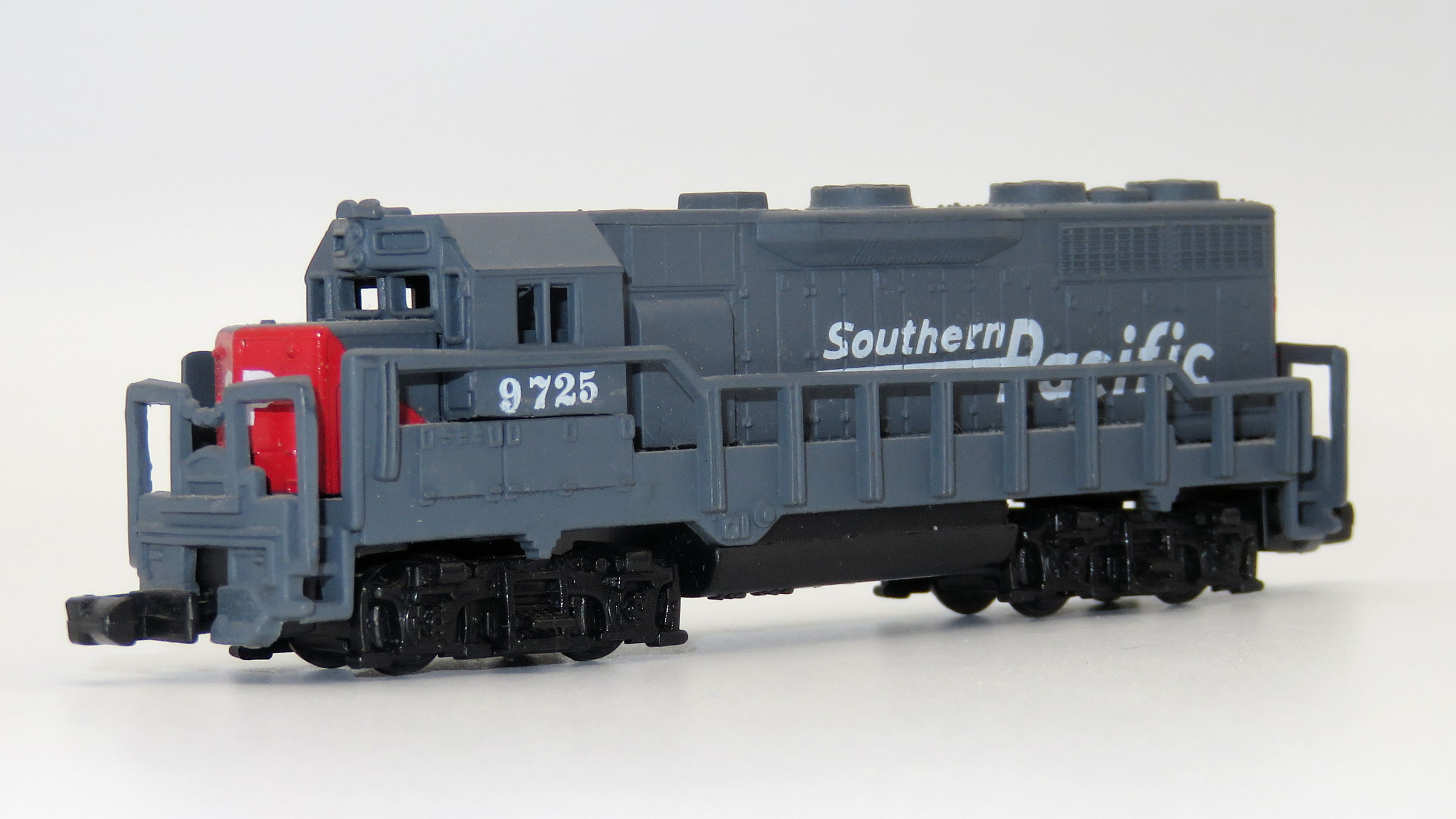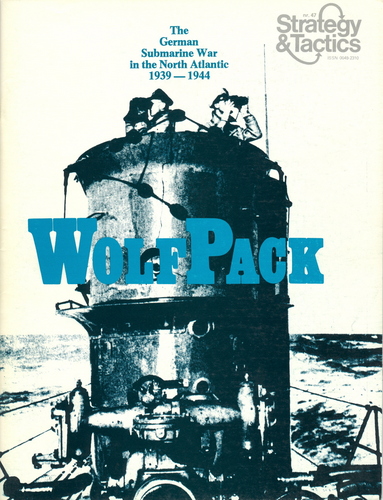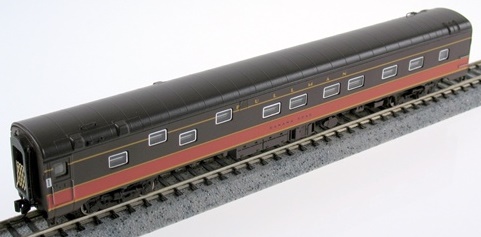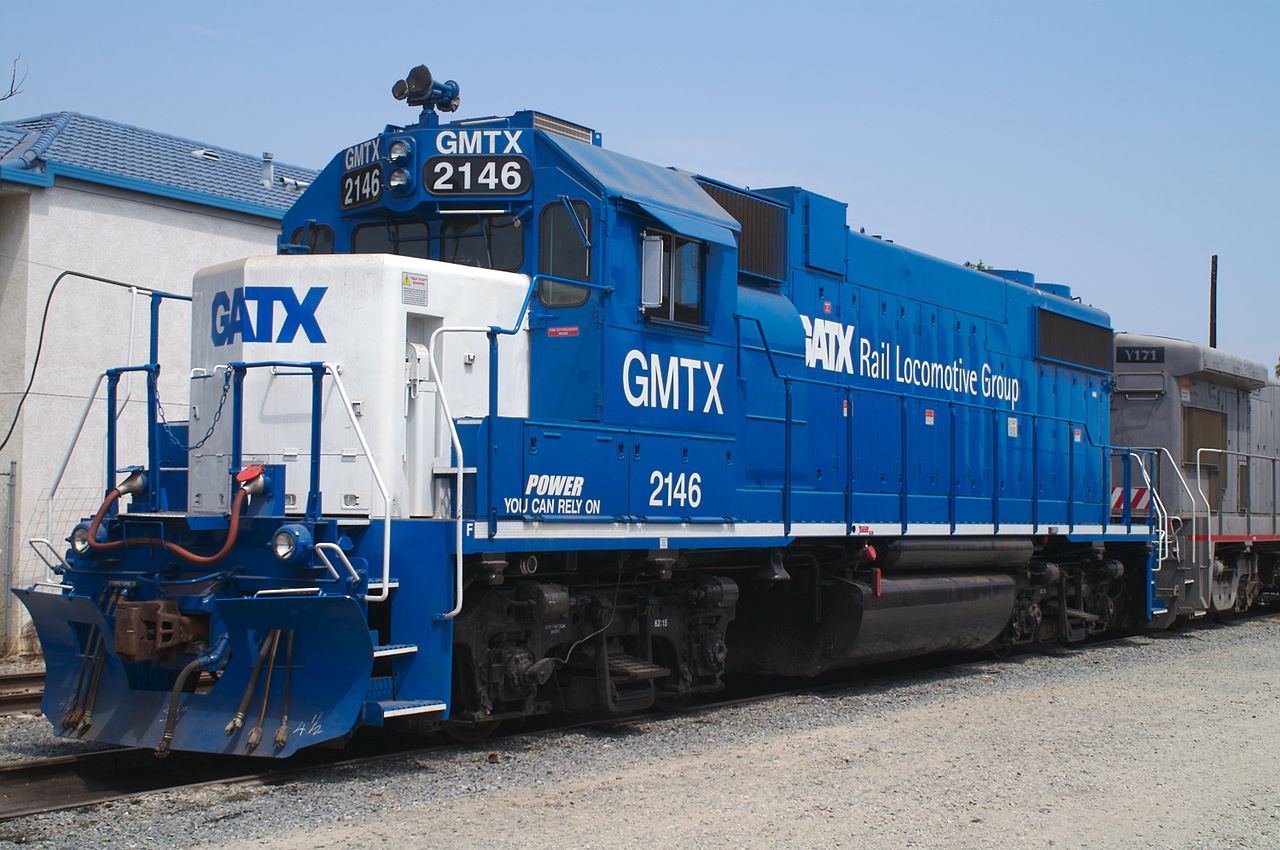Specific Item Information: EMD’s diesel-electric road switcher, the GP38-2, began production in 1972 as an upgraded model of the earlier GP38. Looking almost identical to its predecessor thanks to a standard body and cab design used throughout the 1980s, the GP38-2 became widely used on railways across the country and can still be found in service today. Equipped with an EconamiTM SoundTraxx® sound decoder and factory-set for GP38-2 realism, the diesel package offers a choice of 5 prime movers, 16 airhorns, multiple variations of 7 bell types, 2 air compressors, 3 couplers, plus a function-activated grade-crossing signal—all in 16-bit polyphonic sound. The EconamiTM sound system includes adjustable auto-notching sensitivity for prototypical operation, adjustable master volume, individual sound effect volume levels, advanced consisting, and more.
Additional features include:
• DCC sound-equipped with EconamiTM Sound Value package • dual-mode NMRA-compliant decoder
• directional headlights with Rule 17 dimming
• precision motor
• flywheel
• die-cast frame
• fine-scale handrails
• separately applied detail parts
• E-Z Mate® Mark II couplers, front and rear
Model Information: EMD’s diesel-electric road switcher, the GP38-2, began production in 1972 as an upgraded model of the earlier GP38. Looking almost identical to its predecessor thanks to a standard body and cab design used throughout the 1980s, the GP38-2 became widely used on railways across the country and can still be found in service today. Equipped with an EconamiTM SoundTraxx® sound decoder and factory-set for GP38-2 realism, the diesel package offers a choice of 5 prime movers, 16 airhorns, multiple variations of 7 bell types, 2 air compressors, 3 couplers, plus a function-activated grade-crossing signal—all in 16-bit polyphonic sound. The EconamiTM sound system includes adjustable auto-notching sensitivity for prototypical operation, adjustable master volume, individual sound effect volume levels, advanced consisting, and more.
Additional features include:
• DCC sound-equipped with EconamiTM Sound Value package • dual-mode NMRA-compliant decoder
• directional headlights with Rule 17 dimming
• precision motor
• flywheel
• die-cast frame
• fine-scale handrails
• separately applied detail parts
• E-Z Mate® Mark II couplers, front and rear
Prototype History: The EMD GP38-2 is a four-axle diesel-electric locomotive of the road switcher type built by General Motors, Electro-Motive Division. Part of the EMD Dash 2 line, the GP38-2 was an upgraded version of the earlier GP38. Power is provided by an EMD 645E 16-cylinder engine, which generates 2000 horsepower (1.5 MW). Most built still remain in service in the modern era due to ease of maintenance and exceptional reliability.
The GP38-2 differs externally from the earlier GP38 only in minor details. Its most distinctive identifying feature is the cooling water level sight glass on the right side of the long hood. The battery box covers of the Dash 2s are bolted down instead of hinged. It can be distinguished from the contemporary GP39-2 and GP40-2 in that its Roots blown engine had two exhaust stacks, one on each side of the dynamic brake fan, if equipped, while the turbocharged GP39-2 and GP40-2 has a single stack. The GP39-2 has two radiator fans on the rear of the long hood like the GP38-2, while the GP40-2 has three. It was also available with either a high-short-hood, common on Norfolk Southern units, or a low-short-hood, which is found on most other railroads.
From Wikipedia
The GP38-2 differs externally from the earlier GP38 only in minor details. Its most distinctive identifying feature is the cooling water level sight glass on the right side of the long hood. The battery box covers of the Dash 2s are bolted down instead of hinged. It can be distinguished from the contemporary GP39-2 and GP40-2 in that its Roots blown engine had two exhaust stacks, one on each side of the dynamic brake fan, if equipped, while the turbocharged GP39-2 and GP40-2 has a single stack. The GP39-2 has two radiator fans on the rear of the long hood like the GP38-2, while the GP40-2 has three. It was also available with either a high-short-hood, common on Norfolk Southern units, or a low-short-hood, which is found on most other railroads.
From Wikipedia
Road Name History: GATX Corporation (NYSE: GMT) is an equipment finance company based in Chicago, Illinois. Founded in 1898, GATX's primary activities consist of railcar operating leasing in North America and Europe. In addition, GATX leases locomotives in North America, and also has significant investments in industrial equipment and marine assets, including ownership of the American Steamship Company, which operates on the Great Lakes. The CEO/Chairman is Brian A. Kenney.
GATX Corporation is divided into four business segments: Rail North America, Rail International, American Steamship Company (ASC), and Portfolio Management. Portfolio Management consists largely of the corporation's non-rail and non-Great Lakes assets.
GATX is one of several major North American rail operating lessors, and measured by fleet size, ranks as number two in this market behind GE Rail Services. Other major North American rail operating lessors include CIT, First Union, Union Tank Car Company, Trinity Industries Leasing, ARL, and Helm Financial.
GATX derives its name from its primary reporting mark for its North American railcars, "GATX". The mark itself was derived from GATX's prior corporate name, "General American Transportation". Since all non-railroad owners of railcars must append an "X" to the end of their mark, GAT became GATX. GATX mainly applies the GATX mark to tank cars, although the mark has been used in other examples such as with hoppers; GATX's primary freightcar marks are GACX (for general-service freight cars), GGPX (for coal cars), GIMX (for intermodal cars), GPLX (for plastic pellet cars), GMTX and LLPX (for locomotives), and GPFX (for pressure-differential cars). GATX also owns a number of other marks, including GABX, GAEX, GFSX, GOHX, GSCX, IPSX, and TRIX. Many GATX cars carry a large "GATX" logo in the upper right-hand corner of the car regardless of the reporting mark they carry; this logo is applied for marketing reasons and does not have any operational significance.
The General American Transportation Corporation became GATX Rail Corporation, a unit of the GATX Corporation, on January 1, 2000.
GATX engages in both full-service and net leasing of railcars. In a full-service lease, a GATX-owned mark is applied to the car, and GATX maintains the railcar and pays for any required property insurance and property taxes. In a net lease, the lessee applies its mark to the car, and the lessee pays for any required property insurance and property taxes. Often, on a net-leased car, there is no evidence of GATX ownership, although some net lease cars carry a GATX logo.
The most common type of car in the GATX North American fleet is the tank car; other major car types include covered hoppers, open-top hoppers, and gondolas. GATX invests in nearly every type of railcar operated in North America. In Europe, tank cars also make up GATX's largest fleet, but unlike in North America, GATX's European fleet includes substantial quantities of intermodal cars which are owned in a GATX joint venture called AAE Cargo. In contrast, GATX's North American intermodal car fleet is relatively small. This is true of most North American operating lessors; historically the bulk of the industry's intermodal investment has been made by TTX Corporation, which is jointly owned by North America's Class I railroads.
GATX Corporation is divided into four business segments: Rail North America, Rail International, American Steamship Company (ASC), and Portfolio Management. Portfolio Management consists largely of the corporation's non-rail and non-Great Lakes assets.
GATX is one of several major North American rail operating lessors, and measured by fleet size, ranks as number two in this market behind GE Rail Services. Other major North American rail operating lessors include CIT, First Union, Union Tank Car Company, Trinity Industries Leasing, ARL, and Helm Financial.
GATX derives its name from its primary reporting mark for its North American railcars, "GATX". The mark itself was derived from GATX's prior corporate name, "General American Transportation". Since all non-railroad owners of railcars must append an "X" to the end of their mark, GAT became GATX. GATX mainly applies the GATX mark to tank cars, although the mark has been used in other examples such as with hoppers; GATX's primary freightcar marks are GACX (for general-service freight cars), GGPX (for coal cars), GIMX (for intermodal cars), GPLX (for plastic pellet cars), GMTX and LLPX (for locomotives), and GPFX (for pressure-differential cars). GATX also owns a number of other marks, including GABX, GAEX, GFSX, GOHX, GSCX, IPSX, and TRIX. Many GATX cars carry a large "GATX" logo in the upper right-hand corner of the car regardless of the reporting mark they carry; this logo is applied for marketing reasons and does not have any operational significance.
The General American Transportation Corporation became GATX Rail Corporation, a unit of the GATX Corporation, on January 1, 2000.
GATX engages in both full-service and net leasing of railcars. In a full-service lease, a GATX-owned mark is applied to the car, and GATX maintains the railcar and pays for any required property insurance and property taxes. In a net lease, the lessee applies its mark to the car, and the lessee pays for any required property insurance and property taxes. Often, on a net-leased car, there is no evidence of GATX ownership, although some net lease cars carry a GATX logo.
The most common type of car in the GATX North American fleet is the tank car; other major car types include covered hoppers, open-top hoppers, and gondolas. GATX invests in nearly every type of railcar operated in North America. In Europe, tank cars also make up GATX's largest fleet, but unlike in North America, GATX's European fleet includes substantial quantities of intermodal cars which are owned in a GATX joint venture called AAE Cargo. In contrast, GATX's North American intermodal car fleet is relatively small. This is true of most North American operating lessors; historically the bulk of the industry's intermodal investment has been made by TTX Corporation, which is jointly owned by North America's Class I railroads.
Brand/Importer Information: Bachmann Industries (Bachmann Brothers, Inc.) is a Bermuda registered Chinese owned company, globally headquartered in Hong Kong; specializing in model railroading.
Founded in Philadelphia, Pennsylvania, the home of its North American headquarters, Bachmann is today part of the Kader group, who model products are made at a Chinese Government joint-venture plant in Dongguan, China. Bachmann's brand is the largest seller, in terms of volume, of model trains in the world. Bachmann primarily specializes in entry level train sets, and premium offerings in many scales. The Spectrum line is the high quality, model railroad product line, offered in N, HO, Large Scale, On30, and Williams O gauge all aimed for the hobbyist market. Bachmann is the producer of the famous railroad village product line known as "Plasticville." The turnover for Bachmann model trains for the year ended 31 December 2006 was approximately $46.87 million, a slight increase of 3.36% as compared to 2005.
Founded in Philadelphia, Pennsylvania, the home of its North American headquarters, Bachmann is today part of the Kader group, who model products are made at a Chinese Government joint-venture plant in Dongguan, China. Bachmann's brand is the largest seller, in terms of volume, of model trains in the world. Bachmann primarily specializes in entry level train sets, and premium offerings in many scales. The Spectrum line is the high quality, model railroad product line, offered in N, HO, Large Scale, On30, and Williams O gauge all aimed for the hobbyist market. Bachmann is the producer of the famous railroad village product line known as "Plasticville." The turnover for Bachmann model trains for the year ended 31 December 2006 was approximately $46.87 million, a slight increase of 3.36% as compared to 2005.
Item created by: CNW400 on 2020-07-25 16:50:26. Last edited by CNW400 on 2021-03-29 09:53:46
If you see errors or missing data in this entry, please feel free to log in and edit it. Anyone with a Gmail account can log in instantly.
If you see errors or missing data in this entry, please feel free to log in and edit it. Anyone with a Gmail account can log in instantly.


